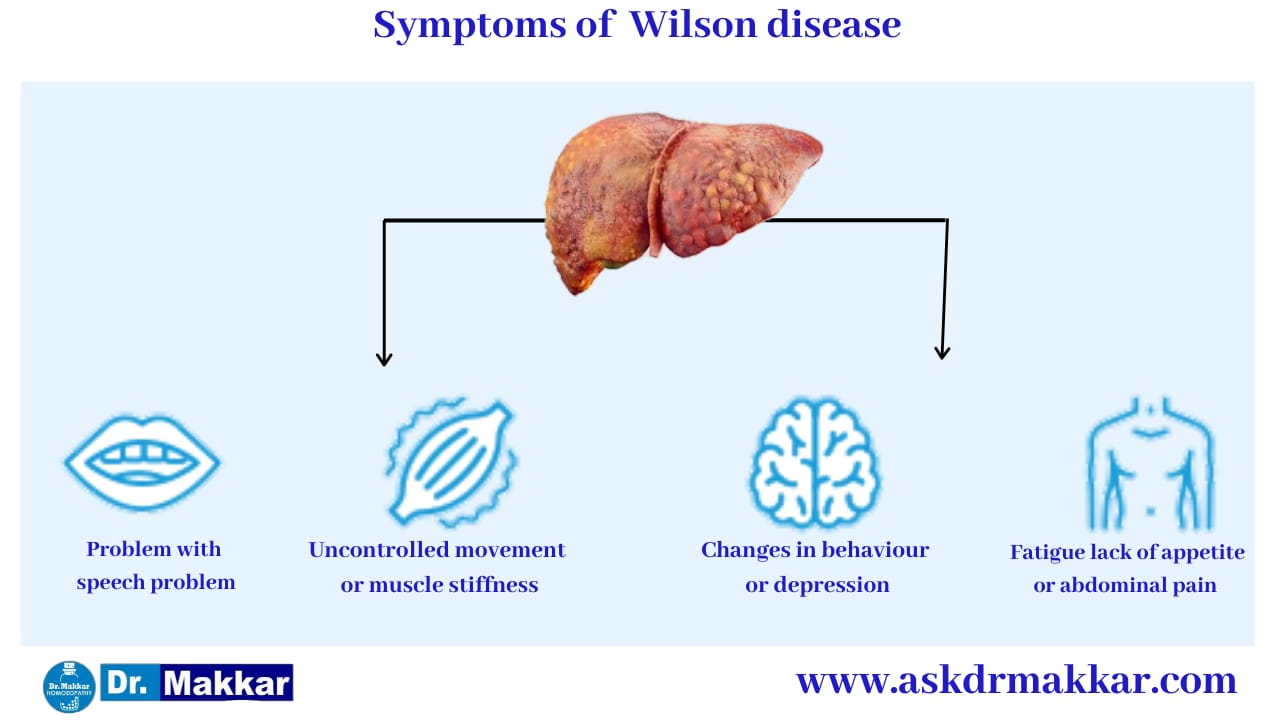
Liver symptoms
People with Wilson disease may develop symptoms of hepatitis, or inflammation of the liver. In some cases, people develop these symptoms when they have acute liver failure. These symptoms may include
feeling tired
nausea and vomiting
poor appetite
pain over the liver, in the upper part of the abdomen
darkening of the color of urine
lightening of the color of stool
yellowish tint to the whites of the eyes and skin, called jaundice
Some people with Wilson disease have symptoms only if they develop chronic liver disease and complications from cirrhosis. These symptoms may include
feeling tired or weak
losing weight without trying
bloating from a buildup of fluid in the abdomen, called ascites
swelling of the lower legs, ankles, or feet, called edema
itchy skin
jaundice
Nervous system and mental health symptoms
People with Wilson disease may develop nervous system and mental health symptoms after copper builds up in their body. These symptoms are more common in adults but sometimes occur in children.7 Nervous system symptoms may include
problems with speech, swallowing, or physical coordination
stiff muscles
tremors or uncontrolled movements
Mental health symptoms may include
anxiety
changes in mood, personality, or behavior
depression
psychosis
Eye symptoms
Many people with Wilson disease have Kayser-Fleischer rings, which are greenish, gold, or brownish rings around the edge of the corneas. A buildup of copper in the eyes causes Kayser-Fleischer rings. A doctor can see these rings during a special eye exam called a slit-lamp exam.
Among people who have nervous system symptoms of Wilson disease, more than 9 out of 10 have Kayser-Fleischer rings. However, among people who have only liver symptoms, 5 or 6 out of 10 have Kayser-Fleischer rings.
Close-up photo of an eye with a Kayser-Fleischer ring.
Many people with Wilson disease have Kayser-Fleischer rings.
Source: Obtained from the Wilson Disease Association
Other symptoms and health problems
Wilson disease can affect other parts of your body and cause symptoms or health problems, including
a type of anemia called hemolytic anemia
bone and joint problems, such as arthritis or osteoporosis
heart problems, such as cardiomyopathy
kidney problems, such as renal tubular acidosis and kidney stones